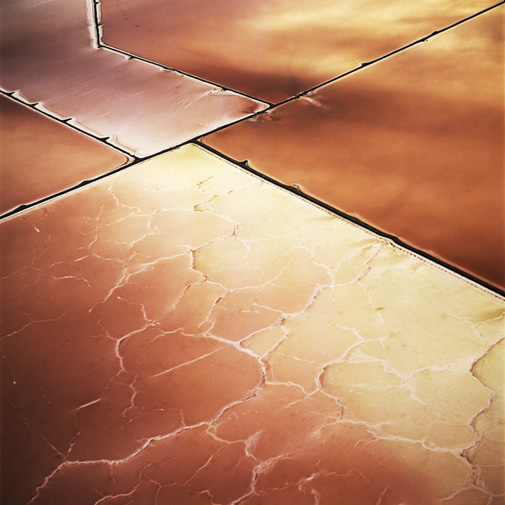
neptune, originally uploaded by sx70manipulator



The Harmonic Center of the Universe is a sonified light-emitting sculpture that generates endless iterations of non-repeating cascading musical lightforms. The Harmonic Center of the Universe was created by Chris Harvey, Olivia Robinson, and Jesse Stiles in early 2009. That spring, the sculpture was nearly destroyed in a freakish thunderstorm that struck during a public exhibition of the work in Lowell, MA. Harvey, Robinson, and Stiles have since restored the work.


I turned to the use of computers in 1968. At that time I was experimenting with redundancy in my paintings (repetition of the same module over large areas with only slight shifts in size). The monotony of the manual task and the limited number of variations which I was able to produce in a given time made me realize the inadequacy of traditional methods in dealing with our present reality.
At first I designed programs in which, given a basic repertoire of signs and a set of combinatory rules, the qualitative value of each possible combination depended on a predetermined balance between probability and chance. Later, I tried to extend the autonomy of the programs by developing systems which could produce a number of different combinatory strategies. This was achieved by introducing a determinant tendency which kept referring to a few basic criteria for guidance and qualitative feedback.







An ambitious creative spirit, MWM (Matt W. Moore) has traveled to Paris for one month to prepare, from scratch, for his first Paris Solo-Exhibition. He arrived with no art, no supplies, and no firm plan for this new series of canvas paintings. The ideas for the artworks have actualized while processing time spent absorbing French Culture, exploring the City Of Lights, the vibrant colors, the exaggerated geometry, and the diverse architecture and fashion of Paris.




The word electricity is thought to derive from the ancient Greek elektron, meaning “amber.” When subject to friction, materials such as amber and fur produce an effect that we now know as static electricity. Related phenomena were studied in the eighteenth century, most notably by Benjamin Franklin. To test his theory that lightning is electricity, in 1752 Franklin flew a kite in a thunderstorm. He conducted the experiment at great danger to himself; in fact, other researchers were electrocuted while conducting similar experiments. He not only proved his hypothesis, but also that electricity has positive and negative charges.
In 1831, Michael Faraday’s formulation of the law of electromagnetic induction led to the invention of electric generators and transformers, which dramatically changed the quality of human life. Far less well-known is that Faraday’s colleague, William Fox Talbot, was the father of calotype photography. Fox Talbot’s momentous discovery of the photosensitive properties of silver alloys led to the development of positive-negative photographic imaging. The idea of observing the effects of electrical discharges on photographic dry plates reflects my desire to re-create the major discoveries of these scientific pioneers in the darkroom and verify them with my own eyes.

The concept of the landscape as architecture has become, for me, an act of imagination. I remember looking at buildings made of stone, and thinking, there has to be an interesting landscape somewhere out there, because these stones had to have been taken out of the quarry one block at a time. I had never seen a dimensional quarry, but I envisioned an inverted cubed architecture on the side of a hill. I went in search of it, and when I had it on my ground glass I knew that I had arrived. It's an organic architecture created by our pursuit of raw materials. Open-pit mines, funnelling down, were to me like inverted pyramids. Photographing quarries was a deliberate act of going out to try to find something in the world that would match the kinds of forms that were in my imagination but unseen in real life — the idea of inverted skyscrapers.


The ecosystems we depend on appear to face resource demands already beyond their capacity. As governments try urgently to stimulate growth, a central question remains. Can the earth’s complex living systems sustain the future consumption patterns of another three billion people in the world’s population by 2050?
Or are we making the transition, as the Nobel laureate Paul Crutzen has suggested, to a point where the face of the earth – its soil, its waters, its groves, its hollows – is no longer natural, but bears the terminal scars of man’s intervention.

In his project Terminal Mirage, Maisel intentionally obscures the function, location, scale, and condition of his subject. No title names the Great Salt Lake or its environs as his subject. His images all share exquisite abstract colorations and design. A few pictures are obviously landscapes. Others are so lacking in items that identify scale they might be images of deteriorating walls or macro photographs of laboratory dishes. As he intends, we are first engaged by the beauty that dances across these large scale prints. Then myriad questions arise: Who or what created what we see in these views? The answers are neither easily explained nor universally confirmed, and the answers are less interesting to Maisel than the questions and discussions the pictures might evoke.


